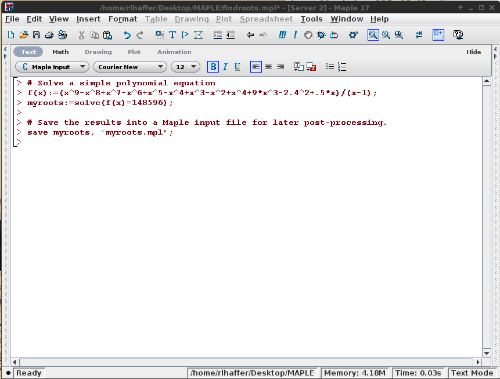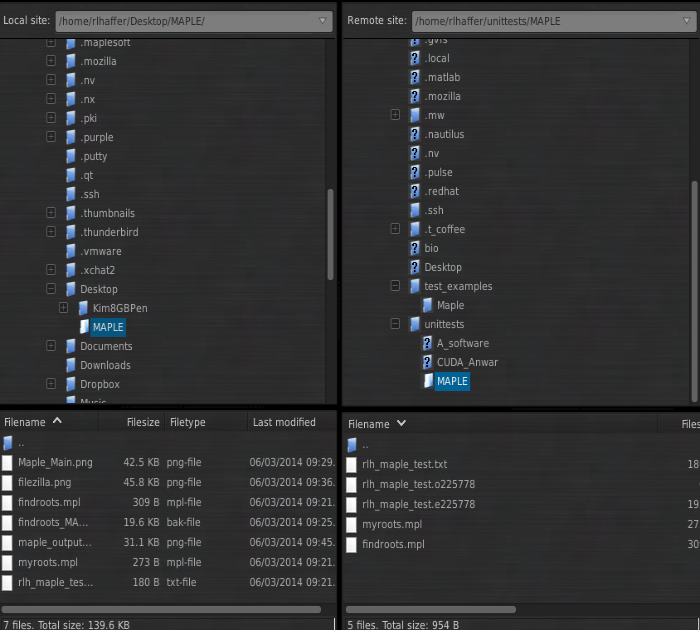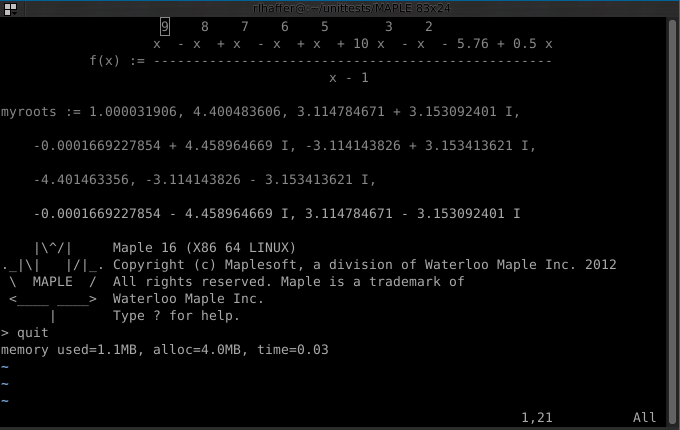Maple
Maplesoft’s core technologies include the world’s most advanced symbolic computation engine and revolutionary physical modeling techniques.
Combined together, these technologies enable the creation of cutting-edge tools for design, modeling, and high-performance simulation.
- Overview
- HPC Docs
- HPC Tutorials
- Linux Docs
- Linux Tutorials
- Windows Docs
- Windows Tutorials
Overview
Maplesoft’s core technologies include the world’s most advanced symbolic computation engine and revolutionary physical modeling techniques.
Combined together, these technologies enable the creation of cutting-edge tools for design, modeling, and high-performance simulation.
Engineers, scientists, and mathematicians use Maplesoft products to enable them to work better, faster, and smarter.
The Maplesoft product suite includes Maple™, the technical computing and documentation environment, and MapleSim™, the high-performance, multi-domain modeling and simulation tool for physical systems.
For a complete list of products, visit the Maplesoft product suite.
HPC Docs
This tab will contain documentation about the general use of the software on the HPC. This tab will only exist if the software is availabe on the HPC
HPC Tutorials
Maple Example
You can copy and run the maple example on the cluster in your home directory like this:
$ cp -r /share/apps/samples/maple-serial
$ cd maple-serial
$ qsub maple-serial
This is a simple polynomial and the goal is to find the roots of the polynomial.
This explains how to write a simple Maple job and submit it to the HPC.
Open Maple and start a new project:
# Solve a simple polynomial equation
f(x):=(x^9-x^8+x^7-x^6+x^5-x^4+x^3-x^2+x^4+9*x^3-2.4^2+.5*x)/(x-1);
myroots:=solve(f(x)=148596);
# Save the results into a Maple input file for later post-processing.
save myroots, "myroots.mpl";
Save this file as findroots.mpl.
When this runs, it will save the output to the myroots.mpl file.

Now, you need to SSH into the cluster with your MST userID/password.
Once connected, you need to copy the findroots.mpl file from your local system to your home directory on the cluster.
For easy of use, we use Filezilla as the sftp client. WinSCP will work as well.
Create a connection in Filezilla using:

From here you can navigate to your Maple file location on your local system and see your home directly on the cluster.

You can build your folder structure on the cluster how you wish, just use something that is meaningful.
Once copied, you can return to you SSH connection and create your jobfile to run your findroots.mpl project.
Open vi to create your job file.
Since this example is simple, I gave it 1 node - 15 minutes wall time, i want it to email me when it does things -abe, etc.
#PBS -N mytestrun
#PBS -q @nic-cluster.mst.edu
#PBS -l nodes=1
#PBS -l walltime=00:15:00
#PBS -m abe
#PBS -M rlhaffer@mst.edu
#PBS -V
cd $PBS_O_WORKDIR
/share/apps/maple16/bin/maple -q findroots.mpl
**remember to save this as a meaningful .txt file
Back on your terminal window, do ---- qsub findroots.txt
This will queue the job and probably run pretty fast since it is just simple algebra.
When done, you should have an .o###### file and a .e###### file.
The .o###### is the output of you job submission.
The .e###### is the generated error file, if something went wrong with your job.
This is the result in the .o###### file.

Linux Docs
This tab will contain Linux Specific documentation about the software title.
Linux Tutorials
This tab will contain a single quickstart tutorial for using the application on our campus Linux Systems, or links to several tutorials.
Windows Docs
This tab will contain Windows Specific documenation about the software title
Windows Tutorials
This tab will contain a single quickstart tutorial for using the application on our campus Windows Systems, or links to several tutorials.
